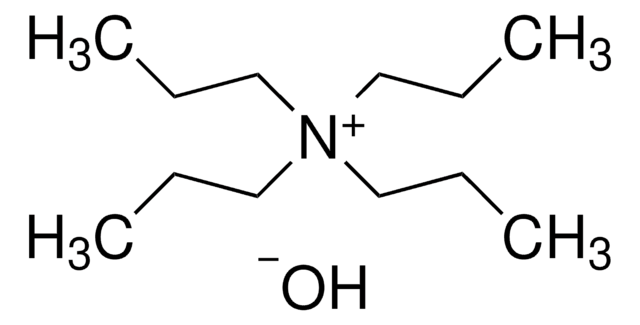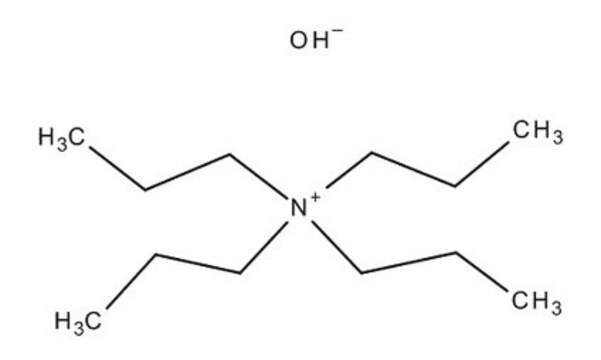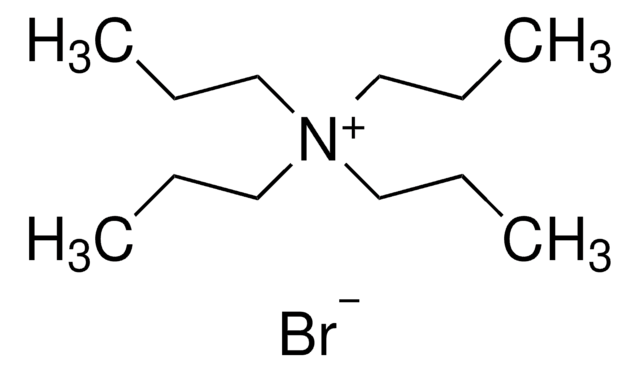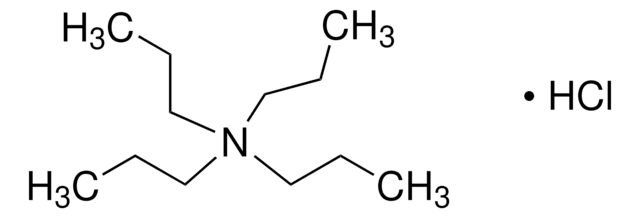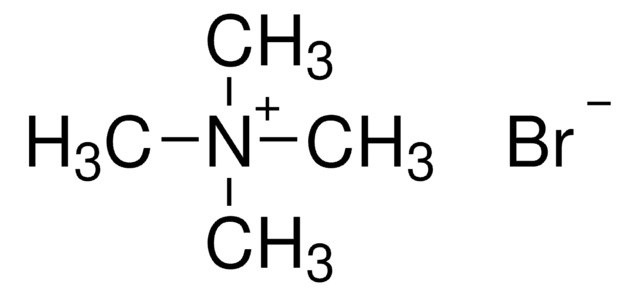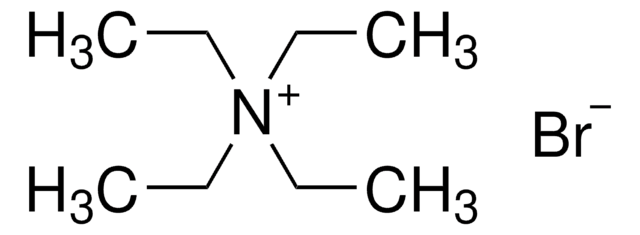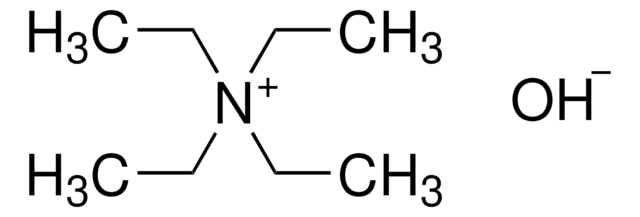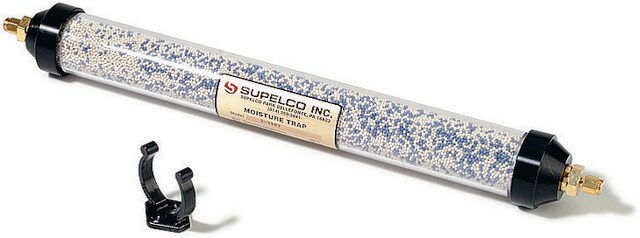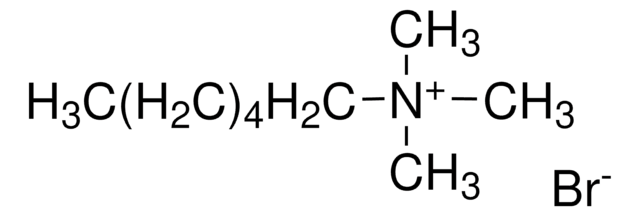225568
Tetrapropylammonium bromide
98%
Sinonimo/i:
N,N,N-Tripropyl-1-propanaminium bromide
Autenticatiper visualizzare i prezzi riservati alla tua organizzazione & contrattuali
About This Item
Formula condensata:
(CH3CH2CH2)4N(Br)
Numero CAS:
Peso molecolare:
266.26
Beilstein:
3567846
Numero CE:
Numero MDL:
Codice UNSPSC:
12352107
ID PubChem:
NACRES:
NA.22
Prodotti consigliati
Livello qualitativo
Saggio
98%
Stato
crystals
Stringa SMILE
[Br-].CCC[N+](CCC)(CCC)CCC
InChI
1S/C12H28N.BrH/c1-5-9-13(10-6-2,11-7-3)12-8-4;/h5-12H2,1-4H3;1H/q+1;/p-1
BGQMOFGZRJUORO-UHFFFAOYSA-M
Cerchi prodotti simili? Visita Guida al confronto tra prodotti
Categorie correlate
Descrizione generale
Tetrapropylammonium bromide (TPAB) is a quaternary ammonium salt. It is commonly used as a phase-transfer catalyst to facilitate charged species transfer between phases during organic synthesis and various chemical reactions. It also exhibits environmental compatibility, operational simplicity, non-corrosiveness, and ease of reusability, rendering it a suitable material for organic synthesis .
Applicazioni
Tetrapropylammonium bromide is used as a structure-directing agent in the synthesis of:
- ZSM-5 zeolite, which is a major catalyst in the petroleum and fine chemical industries.
- Microporous and mesoporous materials that have potential applications in electronics (conducting polymers) and catalysis.
Codice della classe di stoccaggio
11 - Combustible Solids
Classe di pericolosità dell'acqua (WGK)
WGK 3
Punto d’infiammabilità (°F)
Not applicable
Punto d’infiammabilità (°C)
Not applicable
Dispositivi di protezione individuale
dust mask type N95 (US), Eyeshields, Gloves
Scegli una delle versioni più recenti:
Possiedi già questo prodotto?
I documenti relativi ai prodotti acquistati recentemente sono disponibili nell’Archivio dei documenti.
I clienti hanno visto anche
Hui Wang et al.
Physical chemistry chemical physics : PCCP, 17(32), 20636-20646 (2015-07-24)
The (13)C NMR chemical shift moving upfield indicates the main model of π-holeX(-) bond between cyanuric chloride/1,3,5-triazine (3ClN/3N), which possess both the π-hole and σ-hole, and X(-). (13)C NMR and UV absorption titration in acetonitrile confirmed that the bonding abilities
Yong Peng et al.
Angewandte Chemie (International ed. in English), 54(19), 5709-5712 (2015-03-19)
The fabrication of MFI zeolite films with particular b-axis orientation is especially fascinating. Unlike the conventional alkaline or hydrofluoric acid (HF) assisted neutral synthesis route, here we develop a novel neutral synthesis solution system of TPABr/fumed silica/H2 O without the
Sarika Goel et al.
Journal of the American Chemical Society, 136(43), 15280-15290 (2014-10-15)
The encapsulation of metal clusters (Pt, Ru, Rh) within MFI was achieved by exchanging cationic metal precursors into a parent zeolite (BEA, FAU), reducing them with H2 to form metal clusters, and transforming these zeolites into daughter structures of higher
Joel G Davis et al.
The journal of physical chemistry. B, 119(29), 9417-9422 (2014-11-22)
Raman multivariate curve resolution (Raman-MCR), as well as quantum and classical calculations, are used to probe water structural changes in the hydration shells of carboxylic acids and tetraalkyl ammonium ions with various aliphatic chain lengths. The results reveal that water
Peng Bai et al.
Nature communications, 6, 5912-5912 (2015-01-22)
Zeolites play numerous important roles in modern petroleum refineries and have the potential to advance the production of fuels and chemical feedstocks from renewable resources. The performance of a zeolite as separation medium and catalyst depends on its framework structure.
Il team dei nostri ricercatori vanta grande esperienza in tutte le aree della ricerca quali Life Science, scienza dei materiali, sintesi chimica, cromatografia, discipline analitiche, ecc..
Contatta l'Assistenza Tecnica.